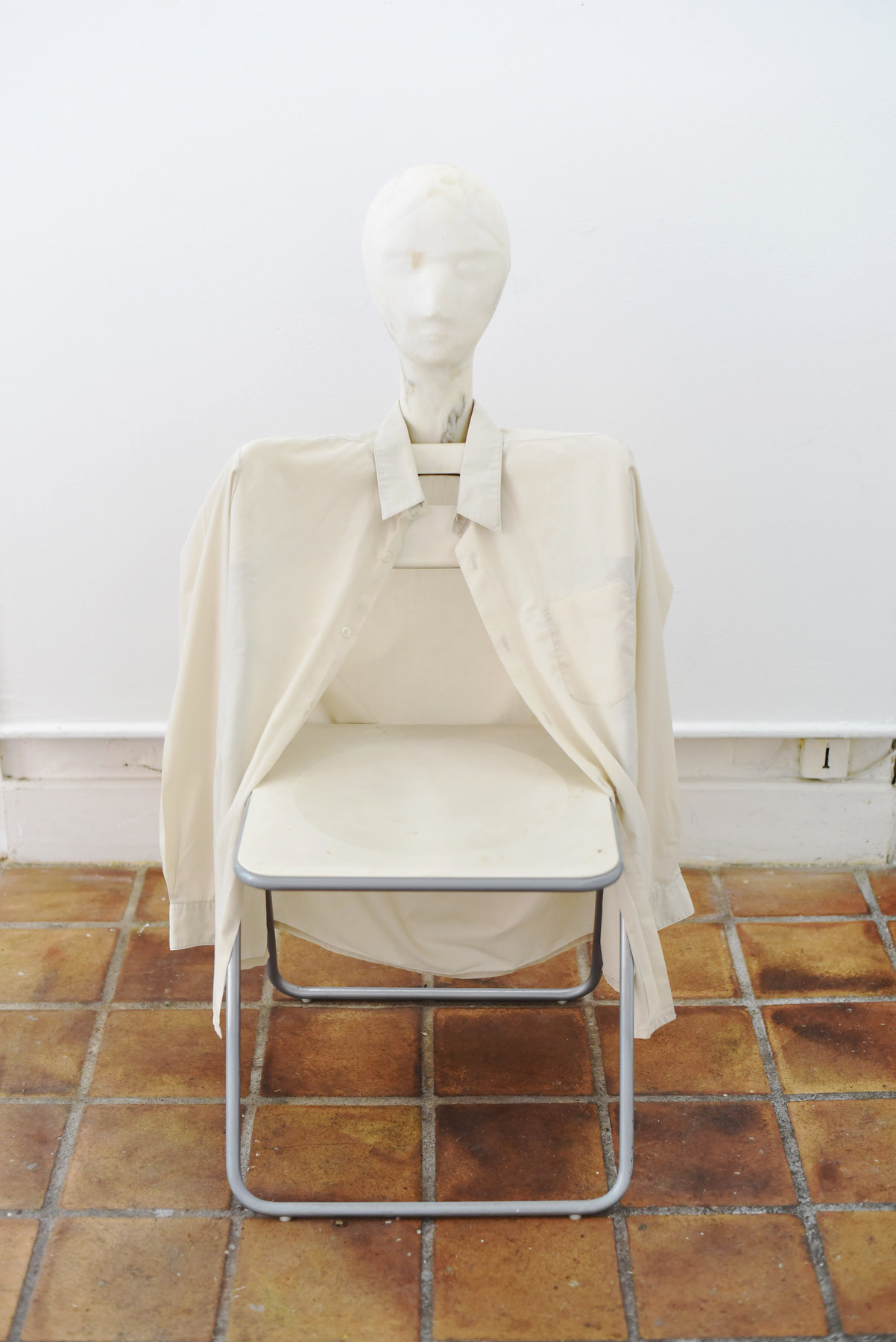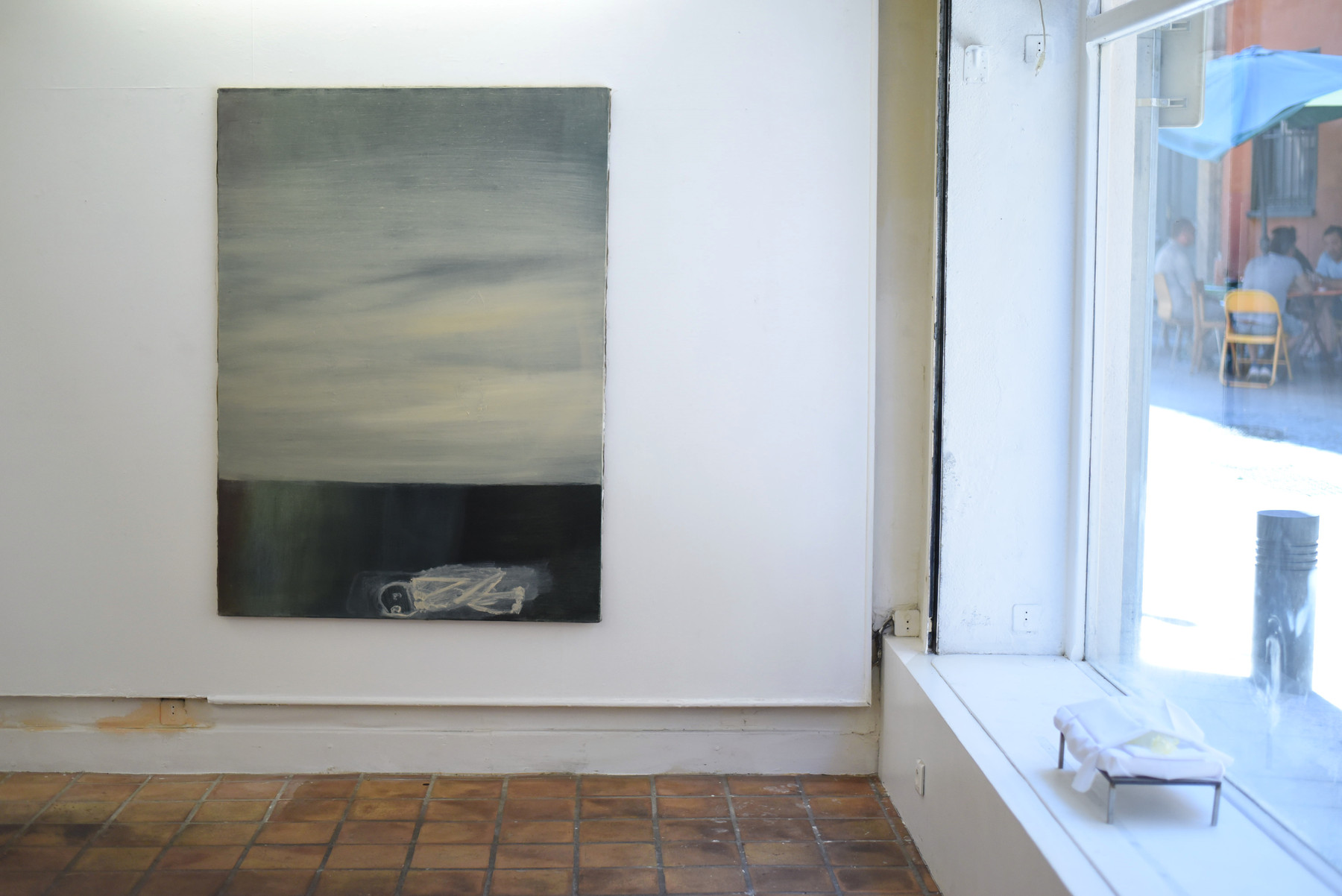Artists: Miriam Cahn and Luca Francesconi
Exhibition title: Club Nature
Curated by: Constance Barrère Dangleterre
Venue: UNE, UNE, UNE, Perpignan, France
Date: July 21 – August 26, 2017
Photography: All images of the works by Miriam Cahn are courtesy of une, une, une and galerie Jocelyn Wolff, All images of the works by Luca Francesconi are courtesy of une, une, une and the artist
The Anthropocene is not only a period of manmade disruption. It is also a moment of blinking self-awareness, in which the human species is becoming conscious of itself as a planetary force. We’re not only driving global warming and ecological destruction; we know that we are.
[…] To make sense of an epochal change that is being driven by human activity, we need more than geology, meteorology and chemistry. If this is a reckoning for our species, we need an intellectual guide – someone to tell us just how panicked we should be, and how our recognition that we are transforming the planet will change us in turn.
Timothy Morton in an article by Alex Blasdel, ‘A reckoning for our species’ : the philosopher prophet of the Anthropocene,
The Guardian, 15th of June 2017
Une, une, une is pleased to present Club nature, an exhibition with Miriam Cahn and Luca Francesconi
The word nature has numerous definitions. A single dictionary entry has the tendency to yield contradictory results, at once pluralistic and confusing: “nature is the physical world, the universe, the ensemble of things and beings” but also, “nature is the system of principles and forces, in particular of life, in opposition to the actions of man.” Humanity is thus included and rejected, densifying the dialectic between man and nature. Are humans natural? Are their actions artificial? Is a hybrid at once natural and artificial? The works of Miriam Cahn and Luca Francesconi, exhibited here, propose different elements of a response.
“I’ve always thought of the work of Miriam Cahn as very close to the visualisation of dreams, like droplets of oil on water. As in the way in which Japanese artists painted in the last century: representations are impressions. Hills, shadows… everything is an impression, nothing is really figurative.” These are the terms Luca Francesconi uses to describe what the practice of Miriam Cahn evokes for him, as relayed in an email correspondence relating to the exhibition.
In 1989, Cahn made the drawing MGA im herbst, her eyes closed in a spontaneously performative gesture. The drawing reveals a form of nature that simultaneously emerges and disappears. In the exhibition space, the gigantism of her work stands in contrast to those of Francesconi, who gravitates toward fragments of dried and conserved nature. In Francesconi’s work End of the rivers, a piece of marble is housed in two mummified pangasius fish lying on steel plates. A snake skin floats, Man and My stomach walking occupy common ground while the sculpture Snake of the paddy fields lurks under two of Cahn’s characters, who preside over their own magnetic landscapes. From this ensemble of works a muffled mass emerges, in which the dimensions and weight in the balance dictate the bond and the vital equilibrium between mortality and eternity.
Francesconi develops a language that could be described as “Creole”, made of rustic traditions specific to the culture of the earth and the infinite flows of actions and beliefs that form culture as we know it, digested, transformed and multiple. This “state” of an end of a chain, animating the artist’s entire practice, is no longer natural or artificial: it is other and chimeric.
In the second room, Cahn’s soldiers – erect men – depict the ceaseless warmongering energy of humanity. Here we can once again see the birth of an entity, a transformed nature that Mike Davis refers to as Nature II in Dead Cities; a system autonomously kept alive by developing a new form of life activated by the impact of war.
Francesconi’s Head of the moon depicts an astral and diaphanous face, similar to that of Cahn’s soldiers, evoking the different influences that the moon exerts on our collective existence. These three characters collude in a movement that combines inertia with action. Facing them, two recumbents emerge: Cahn’s liegen, presented face down, and Francesconi’s Sick man beyond, in which a figure lies in bed – perhaps a hospital bed – as light from the window pierces his tattered skin resin.
In the office, Cahn’s pastel drawing am strand describes a beach scene revolving around violence as Francesconi’s Decoration, slipped into the showroom for crafted objects, calls for a strange peace of mind within a simulacrum of pot-pourri.
This exhibition is made possible thanks to the support of Ivan Baranes, Jacques Font, Jean-Philippe Julia, Terra Remota, Villa Dufflot, Axa assurance Bourret Grospellier.
Miriam Cahn, liegen, 2007, oil on canvas, 150 x 110 cm
Miriam Cahn, soldat, 2010, oil on canvas, 130 x 80 cm
Miriam Cahn, soldat, 2010, oil on canvas, 145 x 115 cm
Luca Francesconi, head of the moon, 2012, Plastic, iron, marble, cotton, 108 x 42 x45 cm
Luca Francesconi, head of the moon, 2012, Plastic, iron, marble, cotton, 108 x 42 x45 cm
Luca Francesconi, sick man beyond, 2016, Steel, cotton, plastic, 22 x 41 x 14 cm
Luca Francesconi, sick man beyond, 2016, Steel, cotton, plastic, 22 x 41 x 14 cm
Miriam Cahn, am strand, 2015, pastel on paper, 60 x 96 cm
Miriam Cahn, MGA im Herbst (bl.-arb.), 1989, Black chalk on paper, 275 x 360 cm
Miriam Cahn, au travail, 2011, oil on canvas, 180 x 100 cm
Miriam Cahn, mit bündeln, 2002, oil on canvas, 180 x 88 cm
Luca Francesconi, snake of the paddy fields, 2016, Marble and rice, dimensions variables
Luca Francesconi, end of the rivers, 2014, Marble and fish, 60 x 30 x 15
Luca Francesconi, end of the rivers, 2014, Marble and fish, 60 x 30 x 15
Luca Francesconi, end of the rivers, 2014, Marble and fish, 60 x 30 x 15
Luca Francesconi, man, 2016, Cotton, plastic, 36 x 10 x 6 cm; my stomach walking, 2016, bronze, 38 x 13 x 10 cm
Luca Francesconi, mue, dimension variable
Luca Francesconi, decoration, bronze, plastique, vegetaux, 2012, Ø22 cm
Luca Francesconi, decoration, bronze, plastique, vegetaux,2012, Ø22 cm


























